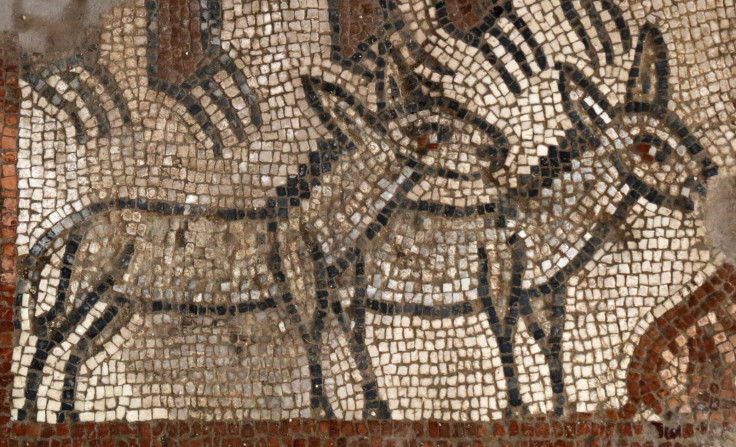Rare biblical mosaics discovered in 5th century synagogue excavations in Galilee
The mosaics depicted Noah's Ark and the parting of the Red Sea.

A team of archaeologists have discovered a new set of mosaics at a Late Roman synagogue in Huqoq, a village in Israel's Lower Galilee. The artworks that decorated the floor of one region of the structure depict two scenes from the Bible's Old Testament – Noah's Ark and the parting of the Red Sea.
The discovery was made by Jodi Magness, a professor at the University of North Carolina at Chapel Hill College of Arts and Sciences, along with assistant director Shua Kisilevitz of the Israel Antiquities Authority and their team. The panel with Noah's Ark depicts an ark and pairs of animals, including elephants, leopards, donkeys, snakes, bears, lions, ostriches, camels, sheep and goats. The scene of the parting of the Red Sea shows Pharaoh's soldiers being swallowed by large fish, surrounded by overturned chariots with horses and chariot drivers.
"These scenes are very rare in ancient synagogues," said Magness, who also works as a National Geographic explorer. "The only other examples that have been found of Noah's Ark are at Gerasa/Jerash in Jordan and Mopsuestia/Misis in Turkey."
As for the parting of the Red Sea, the professor said she had only seen two other instances of similar works. "One is in the wall paintings at Dura Europos [in Syria], which is a complete scene but different from ours — no fish devouring the Egyptian soldiers. The other is at Wadi Hamam [in Israel], but that's very fragmentary and poorly preserved," National Geographic quoted her as saying.
Since 2012, when the first mosaics were discovered, the Huqoq Excavation Project team has been returning each year to expand the search.
The first mosaic found depicted Samson and the foxes (as related in the Bible's Judges 15:4) and the next year, an adjacent mosaic was uncovered that shows Samson carrying the gate of Gaza on his shoulders (Judges 16:3).

Another mosaic discovered and excavated in the synagogue's east aisle in 2013 and 2014 depicts the first non-biblical story ever found decorating an ancient synagogue. According to the UNC statement, the scene is most probably a reference to the legendary meeting between Alexander the Great and the Jewish high priest. In 2015, a mosaic panel was uncovered next to this scene containing a Hebrew inscription surrounded by human figures, animals and mythological creatures including putti (cupids).
"This is by far the most extensive series of biblical stories ever found decorating the mosaic floor of an ancient synagogue," said Magness. "The arrangement of the mosaics in panels on the floor brings to mind the synagogue at Dura Europos in Syria, where an array of biblical stories is painted in panels on the walls."
© Copyright IBTimes 2025. All rights reserved.






















